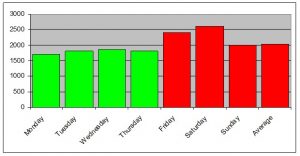Moderate to high intensity exercises, as well as, exercising in the heat causes the body’s temperature to rise. This increase in temperature can cause you to sweat, which is one of our body’s natural functions that helps with thermoregulation (maintaining body temperature). The bodily fluids that make up sweat are mostly water and electrolytes. Electrolytes are ions found in the body, including sodium and potassium, which help to trigger events such as muscle actions. Therefore, when we sweat, we can lose a significant concentration of electrolytes, hindering our body’s ability to control our internal temperature, perform movements, and other important functions such as our respiratory rate and neurological function.
By consuming electrolyte beverages or gels at appropriate times relative to our bout of exercise, we can help prevent excessive loss of these electrolytes through sweating, ultimately aiding our performance and preventing fatigue or injury. There is a wide variety of electrolyte replenishing drinks, including Gatorade and Powerade, which can be consumed during and after exercise in order to help maintain proper electrolyte concentration. However, take note that some of these drinks contain a high amount of sugar which can actually be counteractive towards our metabolism. A simple solution is mixing these drinks with water; another is adding electrolyte powders such as Hammer Fizz, Nuun, or Nathan Catalyst into a bottle of water.
The body is able to replace, at best, about one-third of what it loses during exercise. This is true for fluids, calories, and electrolytes. If you try to replace all the fluids at once, you may put your body in a state of dilutional hyponatremia (overly diluted blood sodium levels) or water intoxication. If you attempt to replace all the fuel you’ve expend, your stomach could back up in total rebellion and refueling will come to a halt. Likewise, trying to replace in equal amounts all of the electrolytes you lose, a number of hormonal triggers may create all sorts of problems such as gastric distress, edema, muscle spasms, and cramping (Eichner).
Based up on the research in this field, it is best to not chug whichever electrolyte replacement drink you consume. Consuming smaller amounts, such as 6-8 fl oz at the beginning of exercise as well as 6-8 fl oz at the end (for a 30 minute exercise) should be more effective and less stressing on the body than chugging the drink at once.
By Anthony Locast
Eichner, E.R. “Genetic and Other Determinants of Sweat Sodium.” Current Sports Medicine Reports 7.4 Supp 1(2008): 236-S40.


